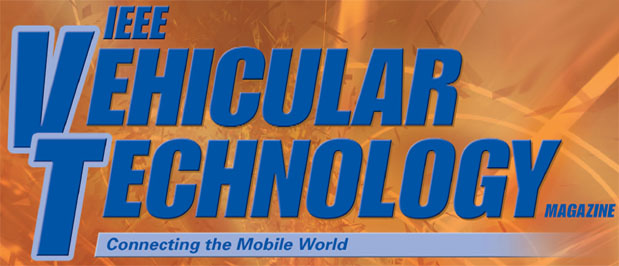Call For Papers:
Special Issue on Channel Modeling and Propagation for Beyond 5G Mobile Radio
Important Dates |
|
|---|---|
| Manuscript Submission by: | 1 November 2024 |
| First Round Reviews by: | 1 February 2025 |
| Second Round Submissions by: | 1 April 2025 |
| Second Round Reviews / Editorial Decision: | 15 May 2025 |
| Publication: September 2025 | |
The global rollout of the fifth generation (5G) of mobile cellular communications is currently underway, with the promise of revolutionizing the communications landscape by improving user experience with interactive and haptic communications, and enabling machine-oriented services that are fundamental for industry automation, intelligent transportation, e-health, among others. While the future of 5G and beyond 5G (B5G) networks looks bright, the design of such networks continues to be a challenging task due to the stringent performance requirements that these networks should meet to deliver ultra-reliable and low-latency services with enhanced mobility. In particular, the optimization of the radio access network of 5G, as well as its redesign toward the transition to sixth-generation (6G) networks employing emerging technologies—such as reflecting intelligent surfaces, alternative modulation techniques, integrated sensing and communication (ISAC), and others—call for the development of novel channel models that serve as benchmarks for system analysis.
This special issue on Channel Modeling and Propagation for B5G Mobile Radio aims to provide a global perspective on open problems, current research trends, new results and ideas that contribute to advance the state of the art on propagation and channel modeling for B5G wireless communications in terrestrial, aerial, vehicular and underwater environments.
Prospective authors are invited to submit original, unpublished, high-quality research papers focused on (but not limited to) the following topics of interest:
- Channel modeling and simulation for mobile and wireless communication systems
- Measurement-based channel modeling and novel channel sounding techniques
- Channel modeling assisted by artificial intelligence/machine learning
- Vehicular communications channels (ground, air, overwater and underwater)
- Nonstationary mobile fading channels
- Air-to-Air and Ground-to-Air channels
- Highly time-varying channels for railroad communications
- Optical channels for mobile communications
- Software and hardware simulation of highly dispersive channels
- Evaluation of new frequency bands for mobile communications (e.g., THz)
- Propagation and channel modeling for ISAC
- Propagation and channel modeling for RIS-enhanced mobile communications
- Mobile channel modeling for the design and analysis of alternative waveforms and modulation techniques in B5G (e.g., orthogonal time-frequency space, OTFS)
All manuscripts should contain state-of-the-art material presented in tutorial style, and must adhere to IEEE VTM guidelines.
Papers presenting original and state-of-the art research and technical contributions are welcome and will be considered. However, their presentation should be accessible for all readers. Submit PDF versions of complete manuscripts to ScholarOne Manuscripts™ (select Special Issue option).
Guest Editors
David W. Matolak (Lead)
University of South Carolina, USA
Daniel B. Da Costa
King Fahd University of Petroleum & Minerals, Saudi Arabia
José Rodríguez-Piñeiro
Tongji University, China
Michael Walter
German Aerospace Center, Germany
Ke Guan
Beijing Jiaotong University, China
Carlos A. Gutierrez
UASLP, Mexico

